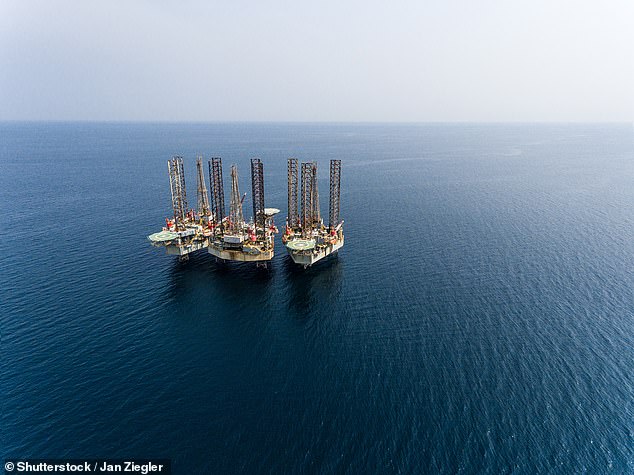SMALL CAP SHARE IDEAS: San Leon Energy made a £15m first-half loss… but is its lend-to-invest strategy going to prove a winner?
A strategy originally born out of prudence sets San Leon Energy apart from the crowd amidst 2020’s unprecedented challenges.
The Nigeria-focused firm’s lend-to-invest strategy may not have been designed for 2020, nonetheless, it has created a uniquely strong position.
A $175million loan note transaction back in 2016 gave San Leon a cash-generating foothold in an oil project previously divested by Shell, which now has the capacity to produce around 50,000 barrels a day (bopd) before pipeline and export losses.

The Nigeria-focused company made a $20.4million (£15.4m) loss in the first half of 2020
San Leon sees this principal repaid plus 17 per cent interest – with $88million remaining before full redemption comes in late 2021 – and at the same time it holds a 10 per cent economic interest in the underlying oil field asset.
The oil field’s returns will soon be boosted by a new pipeline and export route, that will take crude offshore to a floating storage and offloading facility. This will significantly enhance the economics of the operation, which can lose about a third of its barrels before they get to market.
San Leon, following its lend-to-invest model, is supporting the funding of the pipeline project.
It will receive a 14 per cent coupon for four years and gains a 10 per cent stake in the infrastructure, adding a further stream of continuing income.
The blueprint was followed again as recently as September with San Leon lending $7.5million with a 10 per cent coupon, and a 15 per cent equity stake in Decklar Petroleum – which receives the majority share of production from the Oza oil field.
Later, San Leon can increase its stake to 30 per cent if/when it extends a further loan to fund expansion work at Oza.
These investments all follow a distinct pattern, and, significantly the cash flow supports a dividend policy that continues to provide returns to shareholders – some $35million was paid in the first half of this year, which at the time represented a yield of around 30 per cent.
‘We lend to invest as it is a more efficient use of capital,’ said Oisin Fanning, San Leon chief executive.
‘Most small cap oil and gas companies buy to invest. The capital is sunk into project and they never get it back. They just have to hope the investment goes well.
‘From 2016 onwards, we’ve taken a different approach and it has worked very well for us so far. We lend money, at a reasonably high coupon. We’re protecting our capital whilst getting a share of the businesses themselves.
‘From a strategy point of view that’s turned out to be very wise. It fundamentally means that even in hard times I can still categorically say that we’ll be paying a handsome dividend next year, because we know that we’ll be getting in around $100million regardless of the market, regardless of operational issues. We’ll be getting it in the repayment of principal plus interest.’
The financial merits of the model are arguably underrated, from the perspective of the share price at least – as a number of analysts recently wrote up targets and valuation with very substantial ‘blue sky’ attached.
Panmure Gordon in early October pitched a ‘buy’ recommendation with a 59p price target, outlining around 100 per cent upside to the market price of the share on AIM.
Before that, Allenby Capital estimated San Leon’s enterprise value at £371million, versus £29million as implied by the company’s market capitalisation of around £115million.
One reason that investors may potentially overlook San Leon’s success relates to the way in which its business is represented in how it is accounted and where the profit and loss belies the group’s cash machinations.
For those not paying attention to coupons, cash and dividends, the company’s $20.4million loss in the first half of 2020 obscures the nature of San Leon’s performance.
According to Fanning, the paper losses don’t properly depict the business which had $41.5million of income from loan repayments or the $35million paid out to shareholders in the first six month of 2020.
‘You’ve got to look at our cash situation,’ he pointed out. ‘Look at the cash in, look at the returns we’ve given to shareholders, and you’ve got to look at the deals that we’re doing.’
In its note this month, Panmure described San Leon’s approach as a low-risk and value-creating model.
‘With a relatively small amount of capital deployed, attractive returns are realised whilst having more influence and control than would be the case as a minority joint venture partner,’ analyst Ashley Kelty at the City broker said.

